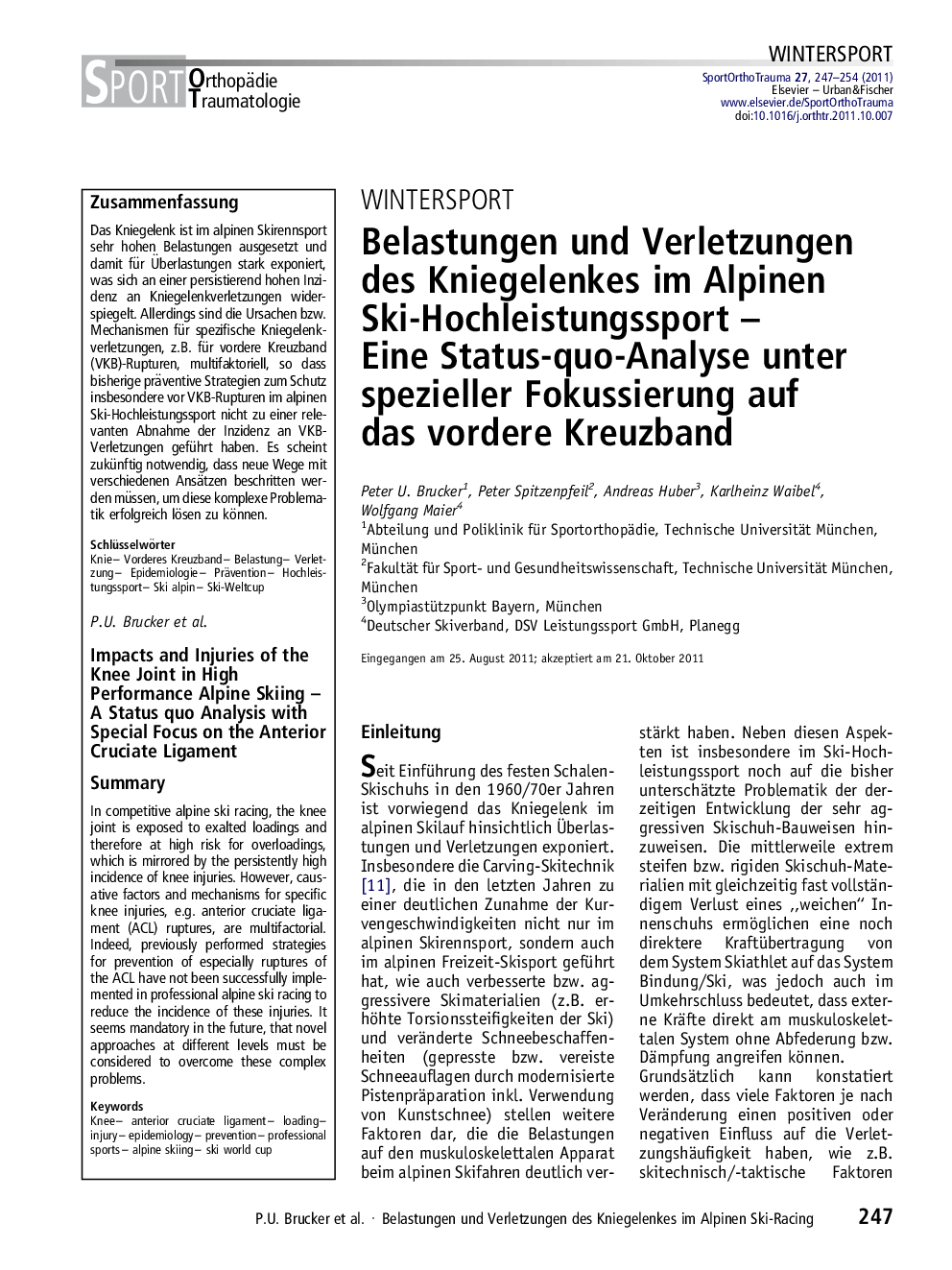| Article ID | Journal | Published Year | Pages | File Type |
|---|---|---|---|---|
| 2740607 | Sports Orthopaedics and Traumatology | 2011 | 8 Pages |
ZusammenfassungDas Kniegelenk ist im alpinen Skirennsport sehr hohen Belastungen ausgesetzt und damit für Überlastungen stark exponiert, was sich an einer persistierend hohen Inzidenz an Kniegelenkverletzungen widerspiegelt. Allerdings sind die Ursachen bzw. Mechanismen für spezifische Kniegelenkverletzungen, z.B. für vordere Kreuzband (VKB)-Rupturen, multifaktoriell, so dass bisherige präventive Strategien zum Schutz insbesondere vor VKB-Rupturen im alpinen Ski-Hochleistungssport nicht zu einer relevanten Abnahme der Inzidenz an VKB-Verletzungen geführt haben. Es scheint zukünftig notwendig, dass neue Wege mit verschiedenen Ansätzen beschritten werden müssen, um diese komplexe Problematik erfolgreich zu können.
SummaryIn competitive alpine ski racing, the knee joint is exposed to exalted loadings and therefore at high risk for overloadings, which is mirrored by the persistently high incidence of knee injuries. However, causative factors and mechanisms for specific knee injuries, e.g. anterior cruciate ligament (ACL) ruptures, are multifactorial. Indeed, previously performed strategies for prevention of especially ruptures of the ACL have not been successfully implemented in professional alpine ski racing to reduce the incidence of these injuries. It seems mandatory in the future, that novel approaches at different levels must be considered to overcome these complex problems.
